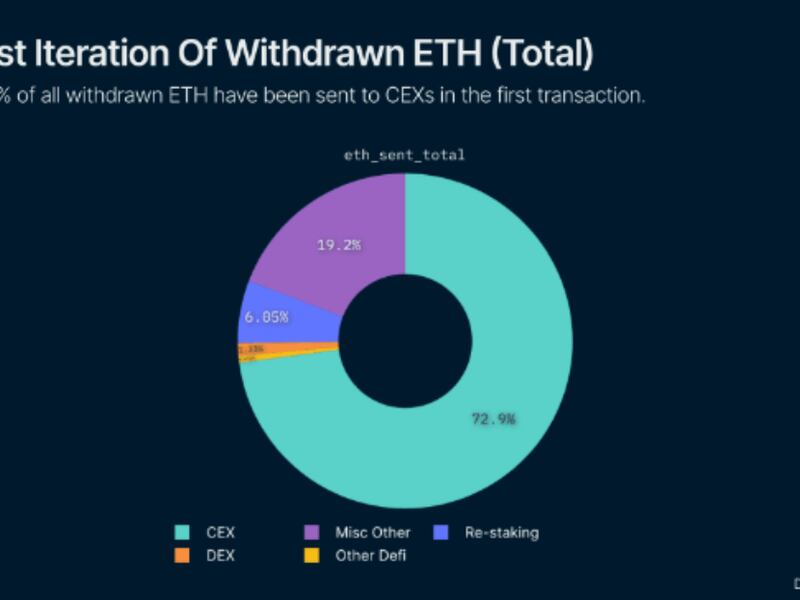Ether Selling Pressure Post-Shanghai Upgrade Was 'Non-Event,' Says Nansen

In hindsight, the selling pressure of ether (ETH), Ethereum’s native token, turned out to be a “non-event” following the Shanghai upgrade, which enabled staking redemptions for the first time, according to a report from blockchain analytics firm Nansen.
Over a month has passed since the Shanghai upgrade that marked Ethereum’s full transition to a proof-of-stake blockchain, and ETH staking deposits have surpassed withdrawals, making the number of staked ETH climb to 19.55 million at presstime, a new all-time high. As a result, the May 8 report stated “that the elimination of unstaking risks has thus far offset selling pressure from withdrawals.”
In the weeks building up to Shanghai, crypto bulls and bears debated extensively about the market’s potential response following the upgrade. The price of ETH has decreased about 8% to $1,851, since April 13 when Shanghai went live, per CoinDesk data. The CoinDesk Market Index, designed to measure the broad performance of the digital asset market, has dropped nearly 10% in the same time period.
“Ultimately, withdrawals have been minimal and have thus far been matched with inflows, signaling strong overall confidence from investors in the network and the asset itself,” according to the Nansen report.
Crypto exchange Kraken, which complied with regulation from the Securities and Exchanges Commission to end its crypto staking-as-a-service platform for U.S customers in February, had the most withdrawals at over 646,000 ETH, with Coinbase, a rival crypto exchange, trailing behind with more than 376,000 ETH.

While roughly 73% of the ETH withdrawn from staking has been sent to centralized exchanges (CEXs) like Kraken and Coinbase, the majority of withdrawn ETH is CEXs withdrawing ETH to themselves.
“This means that the majority ETH being sent to CEXs is not primarily for selling, but for the exchange’s internal operations,” according to Nansen.








